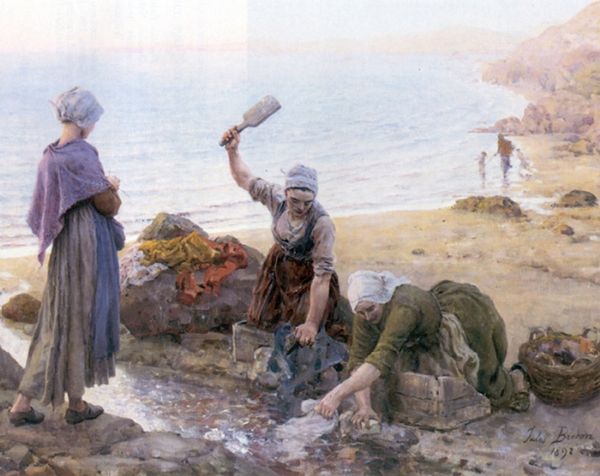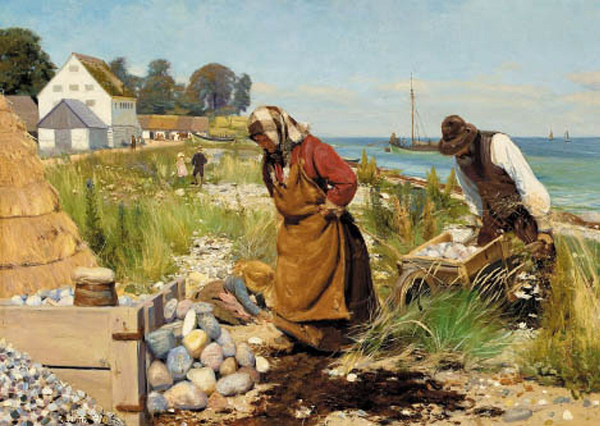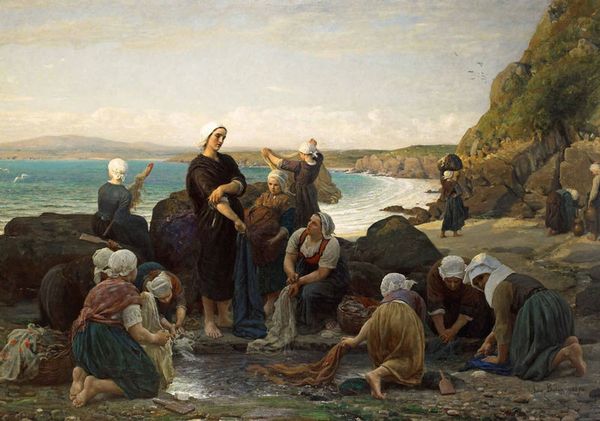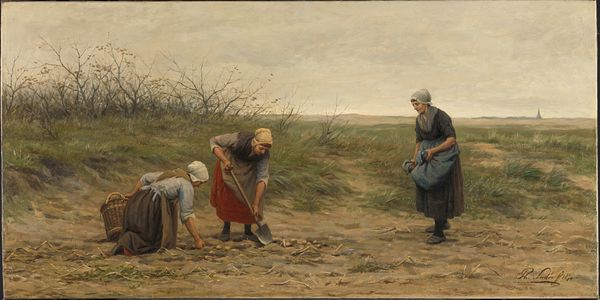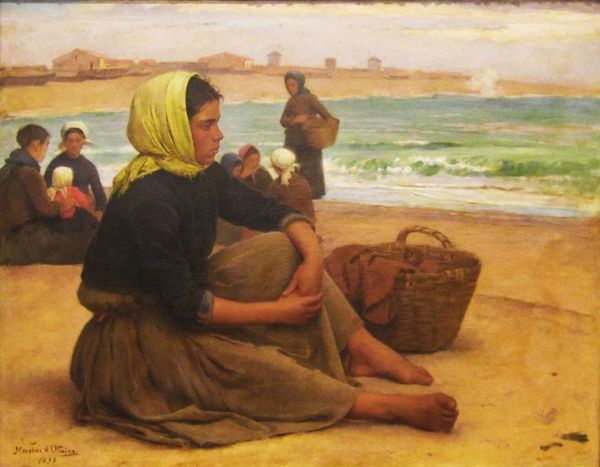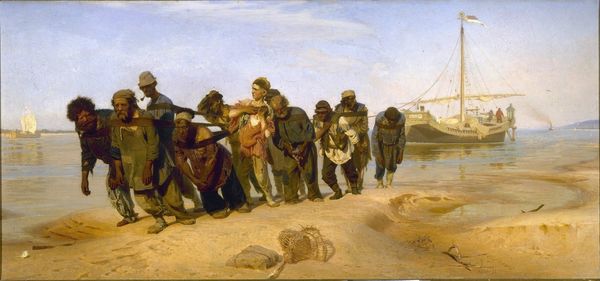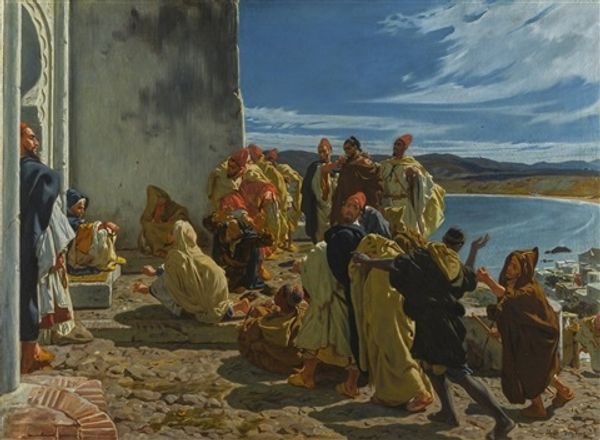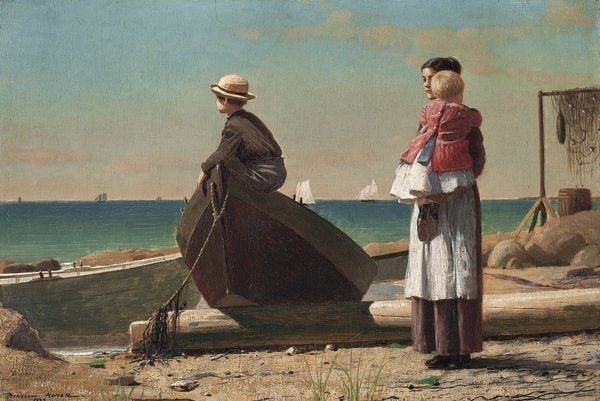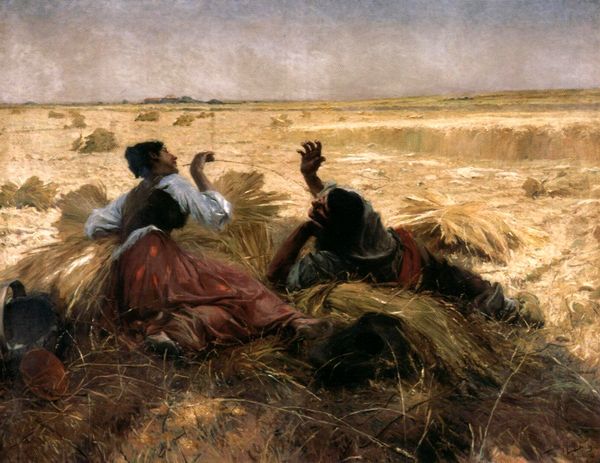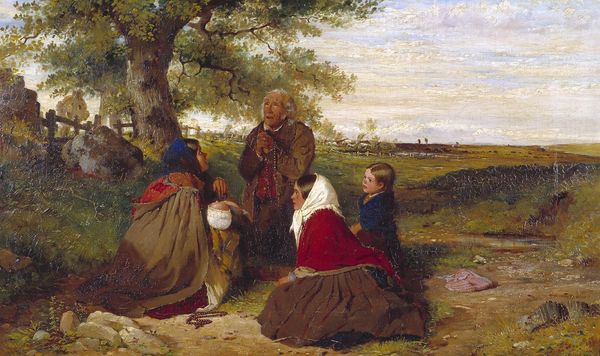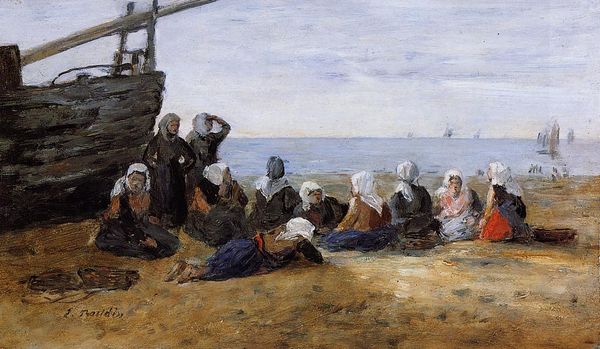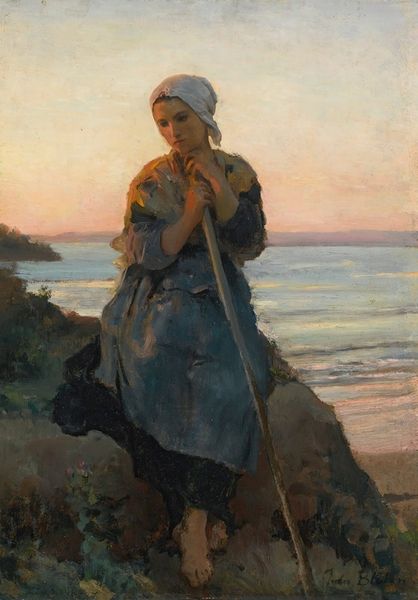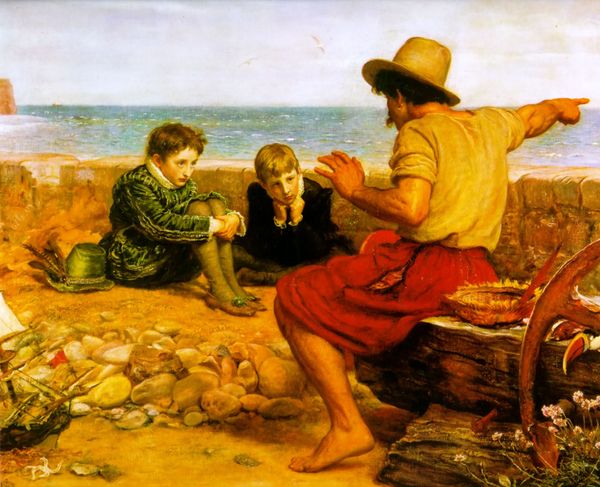
Copyright: Public domain
Curator: This is Jules Breton’s "A Spring by the Sea," painted in 1866. The canvas captures a scene of peasant women along the coast. Editor: My eye immediately goes to the stark contrast between the rough, earthy textures of the shore and the smooth, idealized faces of the women. It's an interesting tension of the real and the imagined. Curator: Indeed. Breton often imbued his peasant subjects with a kind of idealized beauty, aligning them with virtues of labor and simplicity, typical of his time. Note how the women are carrying various tools and containers. These are visual indicators of their essential role in providing sustenance and water to their families and community. Editor: Right, and what’s striking to me is the physicality evident in those objects. That large jug one woman balances on her head, the woven basket another carries - these things are palpable. You can practically feel the weight and texture of them. The artist is engaging with the lived realities of the labor these women performed daily. Curator: Certainly. Breton was deeply influenced by Realism, which aimed to depict everyday life accurately, albeit often tinged with romanticism. But the symbolic value goes beyond just showing them working; the spring itself is an archetypal image of life, fertility, and the provision of essential resources. Editor: And consider the setting. It is definitely rendered *en plein air* – that is, out in the open – a choice to embrace nature itself as part of the work and its material. How do the elements and availability of the landscape feed into our perception of labor? What local resources, what specific kinds of land management and physical movement are required here? Curator: A sharp eye, noting how Breton used the location to reinforce his subjects' connection to the land and their livelihood. Editor: To me, it’s a quiet but powerful testament to the resourcefulness born of that connection and hard labor, visible through their physical relationship to these objects, and a connection that seems to disappear gradually in our time. Curator: A compelling thought about this moment of material labor—that this is not a static depiction of labor, but a passing connection to this landscape in transformation. Editor: Agreed. Food for thought.
Comments
No comments
Be the first to comment and join the conversation on the ultimate creative platform.
